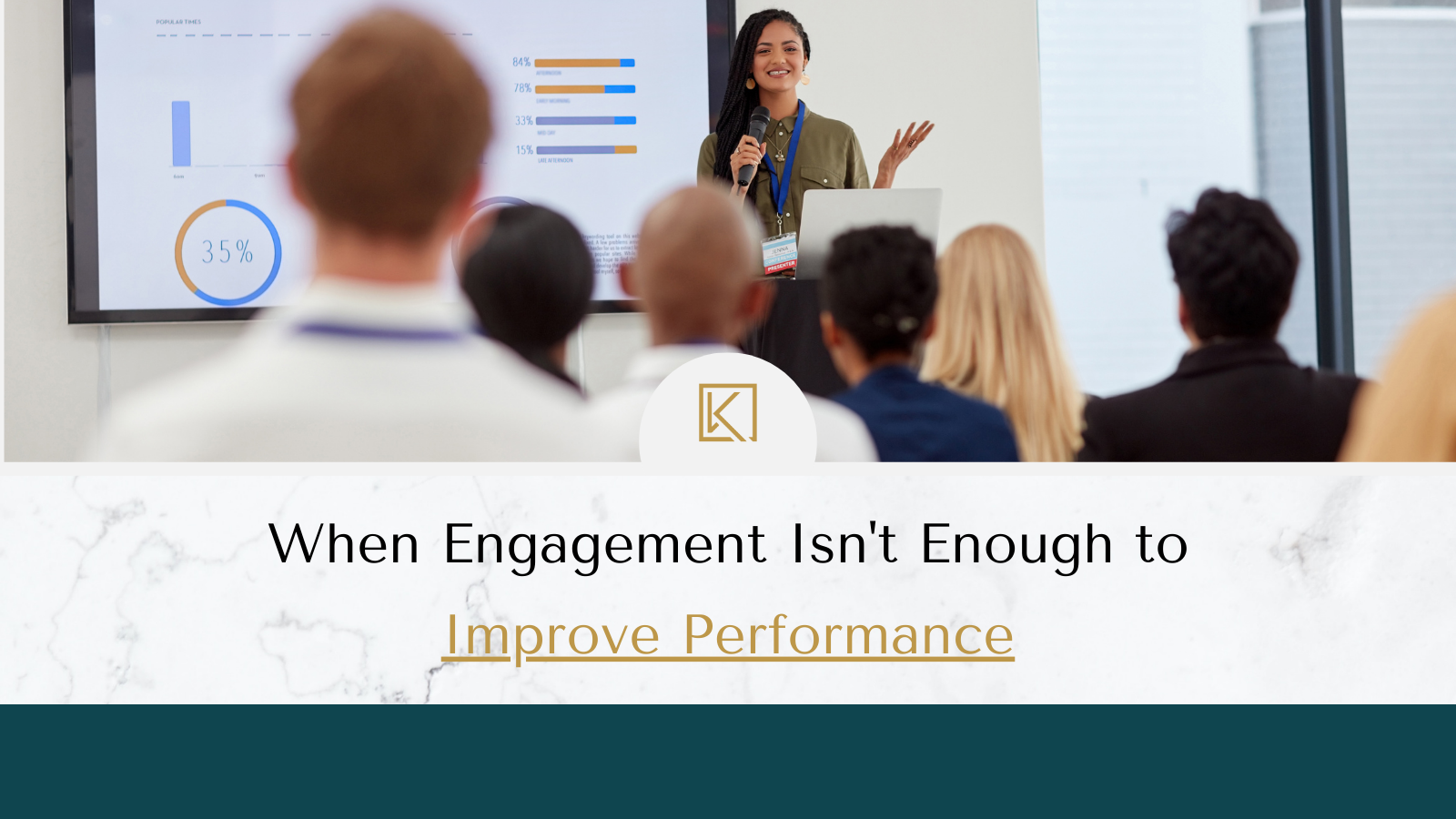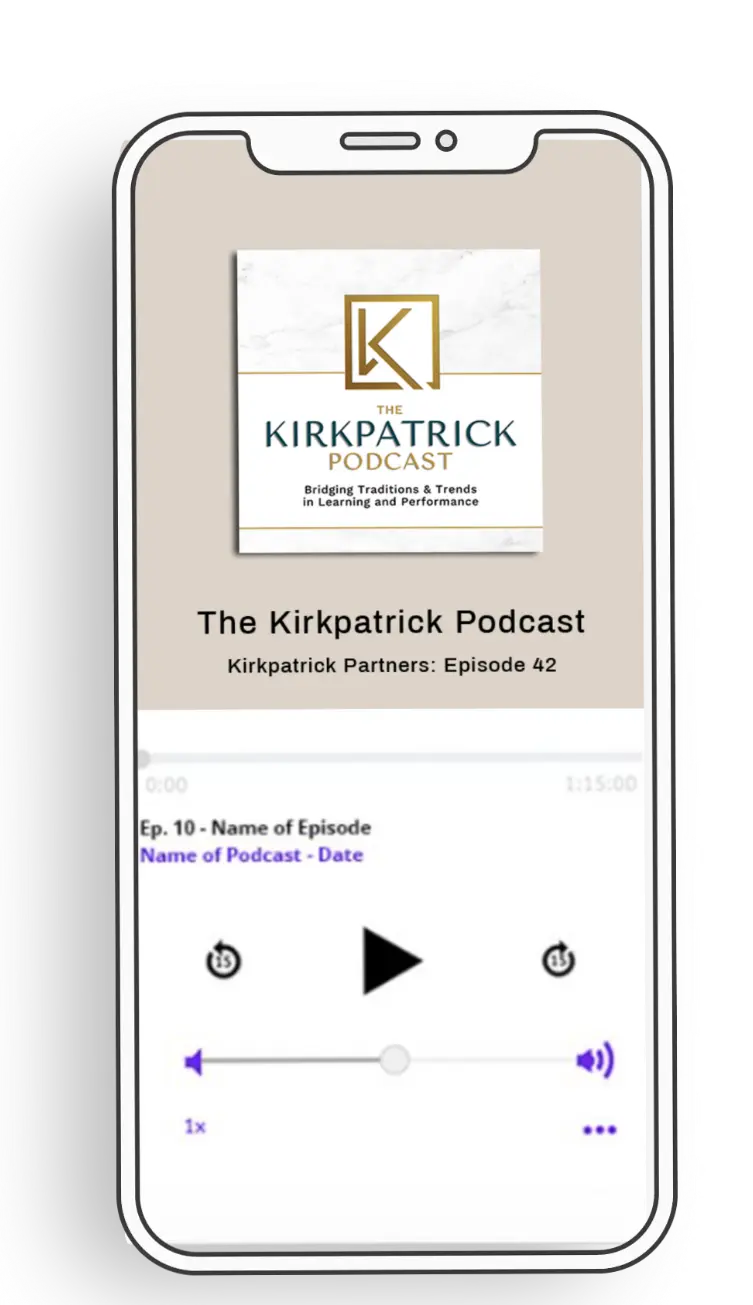When Engagement Isn’t Enough to Improve Performance

When employee engagement initiatives are not driving performance, it begs the question: Are your engagement initiatives really working? For that matter, have you asked your employees what they want to be engaged in and how? Are you evaluating your investments beyond the annual touchpoint? The key to engaging employees and driving performance is connecting each person to the organization’s overall mission and vision. When employees feel disconnected from the bigger picture, engagement becomes just for the sake of… engagement, and performance suffers.
Share the Big Picture
To prevent disengagement, it’s imperative for managers to clearly communicate how each employee’s role directly contributes to the organization’s goals. For instance, when onboarding a new sales rep, explain how their performance targets tie into business growth objectives. Helping staff see their impact fosters meaning in their work. It’s important not just to share the vision, but to share it in a way that feels relevant, connects to the personal perspectives of your employees, and respects their preferences and constraints.
The reality is, not everyone has the capacity for a 3-day training program, or the time to assess whether an opportunity is a good one for them. Leverage bite-sized communication to get your message on your employees’ radar and build trust by showing that you understand the time-consuming responsibilities on their plate. A vision that doesn’t value its people is a vision that will never come to fruition.
Define Critical Behaviors
Don’t overwhelm employees with a laundry list of competencies. Instead, identify the 3-5 most essential behaviors for each role tied to the department’s targets. These focus areas guide employees on where to devote their energy for maximum effect. For engagement to lead to improved performance, there must be an internal shift in motivation and perspective. The ultimate goal is to: Change People ➝ Change Their Contributions ➝ Change the Future
How? Here are 3 critical tips for promoting this momentum:
- Collaborate to Create the Most Compelling Change: Develop the critical behaviors collaboratively so both manager and employee agree these actions move the needle on performance. When employees feel heard and valued, they are more likely to embrace and support the vision.
- Communicate Context and Relevance: Explain how the vision aligns with the company’s goals and the industry landscape. Show how achieving the vision will benefit the company, its employees, and its customers. Providing context helps employees understand the importance and relevance of the vision to their daily tasks.
- Celebrate Milestones and Successes: Recognize and celebrate achievements that align with the vision. Publicly acknowledging progress works on the macro-level to reinforce the vision and maintain enthusiasm, and the micro-level to affirm an employee’s development efforts and motivate them to continue to striving towards greater success.
Keep Goals Attainable
Perhaps the most important thing to keep in mind when collaborating with employees to develop their key performance indicators is to keep them accessible and achievable. You don’t want to set the bar so low that there is no motivation to strive or grow, but you also don’t want to set your employees up for failure and demoralization. The best way to ensure KPIs are attainable for your employee but also driving performance for the organization as a whole is to ask the right questions. For example:
- What do you understand your role in the greater vision of the company to be?
- Here are my ideas of what we should be measuring. Does this sound achievable to you?
- Is there a skillset, necessary to achieve these KPIs, that you don’t feel confident in or need more support in?
- Does any part of achieving this vision feel out of your comfort zone?
Gather 360-Degree Feedback
Tools like performance reviews and references often fall short of their potential either because they’re too surface-level, too biased, or too late to provide the necessary course correction. If you want to accurately assess whether your employees are engaged, and whether that engagement is leading to improved performance, it starts with conducting multi-rater performance reviews.
Balance perspectives from collaborators, managers, and even less supportive peers to uncover the full range of behaviors and interactions. Collect feedback from key stakeholders to reveal potential blindspots and growth areas. Then triangulate your data sources to find the truth and reveal actionable ways that they can improve their performance and you can support them.
Additionally, remember that 360-degree feedback means that you, as a leader or manager, are open to feedback too. Perhaps your employee is underperforming because you’ve not clearly communicated the target KPIs the way you thought you had. It’s important that managers lead by example and always be seeking to improve their leadership skills as well.
The Truth of the Matter
Engaging employees requires openness, honesty, and vulnerability from leadership and staff alike. Model giving and receiving constructive feedback focused on growth areas. Reinforce that reviews aim to continuously improve performance, not to punish. This culture builds the trust necessary for people to bring their best selves to work.
An organization’s big picture should always include fostering a positive work environment that not just leads to employee retention, but leads to employees becoming ambassadors. This happens when employees feel like they belong, know what is expected of them, and feel like they have the support to achieve those expectations.
Stop expecting engagement for engagement’s sake to produce improved performance and start taking critical steps towards creating true change in employee performance and for the organization’s future.
LEARN WITH US
If you are on the search for a community that gets you and can provide you with that support you’ve been looking for, we would love to have you as a part of our Kirkpatrick Community! Learn more and join here.
Check out the most recent episode of the Kirkpatrick Podcast
Don’t forget, the true magic happens when we modernize our training methods and see concrete results. Cultivating an environment of trust, active participation, and continuous enhancement increases the likelihood of our training programs’ success.
Interested in mastering the Kirkpatrick Model? Dive into the Kirkpatrick Evaluation Toolkit, your comprehensive resource for streamlined and impactful evaluation. Learn more here!





